[Editor’s note: “10 Best Dividend Stocks to Buy for the Rest of 2019 and Beyond” was previously published in July 2019. It has since been updated to include the most relevant information available.]
It’s not terribly easy out there for income investors at the moment. Dividend stocks to buy are tough to find. Equity markets are near all-time highs, meaning valuations are stretched — and dividend yields are lower. Treasury yields have fallen amid expectations for a Fed rate cut: getting income from bonds is no easy task, either.
Many longtime dividend growth stalwarts — think McDonald’s (NYSE:MCD) or Procter & Gamble (NYSE:PG) — trade at or near all time highs. Those that aren’t seem to be struggling, with the likes of General Electric (NYSE:GE), Kraft Heinz (NASDAQ:KHC), and Anheuser-Busch (NYSE:BUD) all cutting their dividends in recent years. Finding the middle ground — an attractive valuation combined with a solid business — is exceedingly difficult right now.
Given lower commissions, investors can sell off small parts of their holdings for income — most of which should have appreciated nicely in this decade-long bull market. But income investors usually are looking for “set it and forget it” dividend stocks to buy, not constant portfolio trading.
These 10 stocks don’t quite qualify as “set it and forget it” plays. All have some degree of risk. But the risks seem worth taking for the potential rewards, which include near-term income, longer-term growth, and potential capital appreciation. As such, investors should take at least a long look at these 10 dividend plays.
Broadcom (AVGO)
Dividend Yield: 3.85%

Broadcom (NASDAQ:AVGO) requires quite a bit of trust in management. The semiconductor giant has been built through acquisitions. As of late, AVGO has started moving away from chips and into software.
Last year, the company acquired CA Technologies, an enterprise software play with a big presence in mainframe applications. Broadcom has bought security play Symantec (NASDAQ:SYMC).
Investors haven’t particularly liked either deal. AVGO stock fell on the news of the CA deal. It slipped again as reports of the Symantec acquisition leaked. But CEO Hock Tan certainly deserves the benefit of the doubt at this point. And the decline after the CA announcement, in particular, proved a buying opportunity: before the recent pullback, AVGO shares had risen some 50% in roughly a year.
AVGO may not provide that type of return over the next year — but there’s still a nice bull case here on another merger-related dip. AVGO yields 3.85%. The Symantec deal will add to the company’s significant free cash flow, which keeps that yield secure. Diversification in the existing chip business limits the cyclical impact on earnings — and AVGO shares. Investors do have to trust Hock Tan at this point — but history shows they probably should.
Kellogg (K)
Dividend Yield: 3.7%
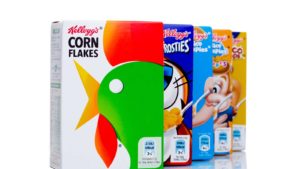
On its face, Kellogg (NYSE:K) seems like a safe value play for income investors. Shares of the iconic American company trade for just 15x 2020 EPS estimates. Kellogg’s dividend yields just under 4%. K historically has been a defensive stock, providing protection if the broader economy stumbles.
But K stock is actually dangerous at this point. It’s one of many consumer stocks struggling to adapt to a new reality, as I detailed last year. Grocers like Kroger (NYSE:KR) are looking to private-label and own brands to protect their thin margins. Cereal demand is falling. As a result, Kellogg’s earnings are heading in the wrong direction.
Revenue is guided to increase just 1%-2% this year excluding the impact of currency and the company’s divestiture of several smaller brands. Adjusted operating income, on the same basis, is expected to be roughly flat. Guidance suggests overall non-GAAP earnings per share will decline more than 10% year-over-year.
In other words, Kellogg isn’t a defensive stock at this point. It’s a turnaround play. And like with KHC and BUD, that creates downside risk if the turnaround stumbles.
For investors who understand the risks, however, K stock is intriguing. As Barron’s detailed last month, the company’s Morningstar Farms business seems notably undervalued. It’s larger by revenue than Beyond Meat (NASDAQ:BYND), which has soared to a $10 billion market cap. Kellogg is valued at just $21 billion; a sale or IPO of Morningstar could unlock significant value.
Again, this is not the traditional, low-risk, dividend stock it used to be. But if Kellogg can jumpstart growth and monetize Morningstar, K stock could have enormous upside ahead.
Gap (GPS)
Dividend Yield: 6.2%
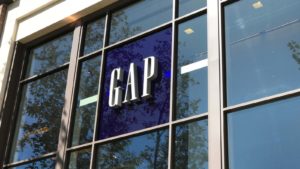
The case for Gap (NYSE:GPS), particularly with the stock near a seven-year low, is that investors are missing the real story here. As I wrote back in November, Gap stock isn’t about its Gap brand; it’s about Old Navy, which likely generates somewhere in the range of three-quarters of operating profit.
With Gap planning to spin off Old Navy later this year, that value might be unlocked. In the meantime, GPS stock yields 6.2%, a figure that might rise after the split.
There are risks here, to be sure. Luke Lango called GPS stock one of the six worst in the S&P 500 in the first half — and he’s not wrong. GPS shares have plunged.
Old Navy’s sales performance recently has not been particularly impressive. Sales for the Gap brand continue to decline. In fact, analysts asked repeatedly on the Q1 conference call if the spin-off would still move forward: there’s a risk that Gap and Banana Republic might not be enough to support a standalone company, even with growth from athleisure concept Athleta.
Even a weaker-than-expected Old Navy still likely supports the entire valuation of GPS stock at the moment. The balance sheet is in good shape, and free cash flow continues to be impressive. Income investors can get yield now — and if all goes well, by next year own growth at Old Navy and income from the company’s other brands.
SL Green (SLG)
Dividend Yield: 4.4%
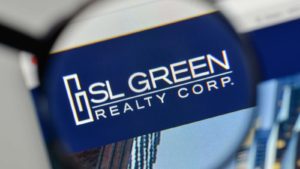
REITs (real estate investment trusts) like SL Green (NYSE:SLG) long have been income investors favorites. REITs allow for diversified exposure to real estate. They offer tax benefits as well: as long as they pay out 90% of taxable income, they pay no tax at the corporate level.
In an environment where 10-year Treasury bonds are yielding less than 1.5%, however, investors looking for dividend stocks to buy have the same difficulty in REITs as in the rest of the market. High-yield REITs generally have some flaws; most notably, even the best retail REITs like Simon Property Group (NYSE:SPG) and Macerich (NYSE:MAC) have struggled amid long-term concerns about demand. The more attractive plays, meanwhile, have been bid up as investors look for lower-risk yield.
SL Green might be a nice middle ground. The stock has struggled for years now; in fact, it touched a five-year low late last year. Worries about the health of New York City real estate seem to be the culprit. Weakness in the company’s suburban assets hasn’t helped, either.
But SL Green largely has exited the suburban business, refocusing on Manhattan. The dividend continues to rise. And longer-term, NYC still seems an attractive real estate market. With a 4.4% dividend, SLG provides attractive income. At 12x FFO (funds from operations, a typical REIT metric), it could provide upside as well if sentiment toward Manhattan real estate improves.
Avista (AVA)
Dividend Yield: 3.3%

Utility stocks like Avista (NYSE:AVA) are another common area of focus for income investors. And like REITs, valuation is a question mark: AVA has risen 12% in three months, a big move for a utility.
But AVA looks like one of the more attractive picks in the industry at the moment. The stock plunged late last year after a potential acquisition by Canada’s Hydro One (OTCMKTS:HRNNF) was called off. Slowly but surely, however, dip-buyers have entered — and there could be more buying ahead.
Avista provides a solid 3.3% dividend yield. Its markets in Washington State, Idaho, and Montana are seeing strong population growth. Valuation is reasonable, and AVA still sits back at 2016 levels.
It’s likely the Hydro One deal — announced in 2017 — led to some dislocation among Hydro One’s investor base. If that’s the case, there’s an opportunity for AVA to catch up to the rest of its sector as income investors return to the story.
International Game Technology (IGT)
Dividend Yield: 6.8%
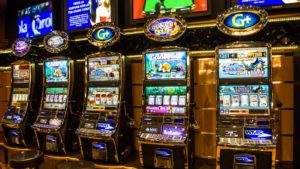
The risks facing International Game Technology (NYSE:IGT) are almost self-evident. Gaming stocks traditionally struggle in recessions. Suppliers like IGT generally aren’t hit quite as hard, and the company’s lottery business should provide support if the economy turns. But there is a decent amount of cyclical risk here.
A good chunk of the company’s profit comes from Italy, where economic growth has been stagnant and political risk seems high. The U.S. slot business has lost market share to smaller operators like Aristocrat Leisure (OTCMKTS:ARLUF) and PlayAGS (NYSE:AGS). On top of all that, IGT has nearly $8.5 billion in debt. The 6% yield here is attractive — but on its own not reason enough to buy IGT stock.
That said, there are reasons to buy, and in fact I personally own IGT shares. Free cash flow should ramp in the next two years, as the company moves past upfront payments required to maintain its concessions in Italy. The lottery business throws off cash as well. Debt should come down, and the U.S. slot business is showing signs of improvement.
The rewards here are enormous as well. As I wrote last month, Wall Street sees huge upside for IGT. The average target price near $21 is 56% higher than IGT’s current price. If IGT can get the U.S. business back on track and use the cash flow from Italy to pay down debt, its stock could have a big move ahead.
State Street (STT)
Dividend Yield: 3.8%

State Street (NYSE:STT) is a clear “value trap or value play?” argument at the moment. For the last year, investors have made their thoughts clear: STT stock has dropped by roughly 45%.
And State Street is fighting headwinds. The company rolled out the first ETF — the SPDR S&P 500 ETF Trust (NYSEARCA:SPY) — but has since been passed by Vanguard and BlackRock (NYSE:BLK) in that key business. The same shift to passive investing driving ETF growth has pressured the company’s asset management business. In Q1, fee revenue declined 4% year-over-year; earnings per share declined 27%.
Cost-cutting simply hasn’t done quite enough to protect margins, leading to the recent pressure on STT stock. But at this point, there’s a question as to whether the sell-off simply has gone too far. STT stock is quite cheap, at a price-earnings ratio of nine.
Meanwhile, a recent dividend hike moves the yield near 4%, and STT will repurchase $2 billion worth of stock as well. State Street has to find a way to manage pressure on its custody and management businesses — but if it can, there’s potential for a big reversal in STT stock.
CVS Health (CVS)
Dividend Yield: 3.4%
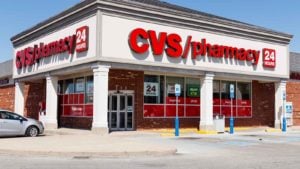
CVS Health (NYSE:CVS) has had a rough go of it in recent years. In March, CVS stock touched its lowest level in almost six years, and it has re-tested those lows several times since. The acquisition of Aetna is under review even after it closed. Lower reimbursement rates and reduced savings on generic drugs are pressuring the entire pharmacy sector: rivals Walgreens (NASDAQ:WBA) and Rite Aid (NYSE:RAD) are struggling as well.
But as I wrote previously, at least some extent all of those headwinds seem priced in. CVS stock trades at historically low multiples. There are still benefits to come from the company’s efforts to change healthcare, and the integration of Aetna with its existing pharmacy business.
The headwinds are real, and the selloff in CVS stock does make some sense. But this remains an attractive business that is now priced for steady declines going forward. It will take little in the way of an upside surprise for CVS to outperform expectations — and for CVS stock to claw back at least some of its recent losses.
BP (BP)
Dividend Yield: 6.7%

For BP (NYSE:BP), the case is reasonably simple. BP is the integrated energy company with the best dividend yield, which currently nears 7%. With liabilities relating to the Deepwater Horizon tragedy finally behind the company, cash flow and earnings will improve as BP gets back to “normal.”
That’s a case I’ve made for some eighteen months now — and it still holds. Oil price movements might seem a risk — but BP’s downstream businesses benefit from lower crude prices, which mitigates that effect somewhat. In this market, BP stock might even be considered among the safer plays out there, as counterintuitive as that sounds. For a nearly 7% yield the modest risks here seem worth taking.
Bristol-Myers Squibb (BMY)
Dividend Yield: 3.4%
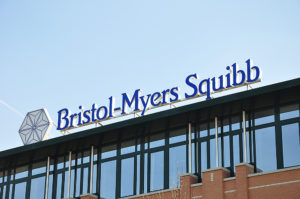
Pharmaceutical companies, too, used to be a safe haven for income investors. They generally offered dividend yields of at least 2% — and protection from market and economic downturns. That’s no longer the case, however — which highlights the potential risk in Bristol-Myers Squibb (NYSE:BMY).
U.S. companies, in particular, have struggled to find blockbusters. As a result, patent expirations on key product lead companies to search for growth however it can be found. For Bristol-Myers Squibb, products like Orencia (which treats rheumatoid arthritis) and blood thinner Eliquis are losing their protection shortly. And so the company went and acquired biotechnology major Celgene (NASDAQ:CELG).
Unfortunately for BMY stock, investors hated the deal. BMY shares dropped in its wake. They liked it less when Bristol-Myers announced last month that it would divest psoriasis treatment Otezla as required by regulators. BMY once again threatened a six-year low.
But at this point, BMY is starting to look attractive. Even if the company overpaid for Celgene, to some extent that’s baked into the stock price. The dividend yield now sits at 3.6% — and could rise once the acquisition is completed. A 10x forward P/E multiple will come down as well.
Pharma stocks are riskier than they used to be — especially for those using debt to drive growth. Mallinckrodt (NYSE:MNK) is a good example of how pharmaceutical M&A can go terribly wrong. But Bristol-Myers Squibb’s diversified base and long history suggest the downside shouldn’t be that steep. And as Celgene comes on board and growth returns, investors might again start focusing on the potential rewards.
As of this writing, Vince Martin is long shares of Gap Inc. and International Game Technology. He has no positions in any other securities mentioned.
